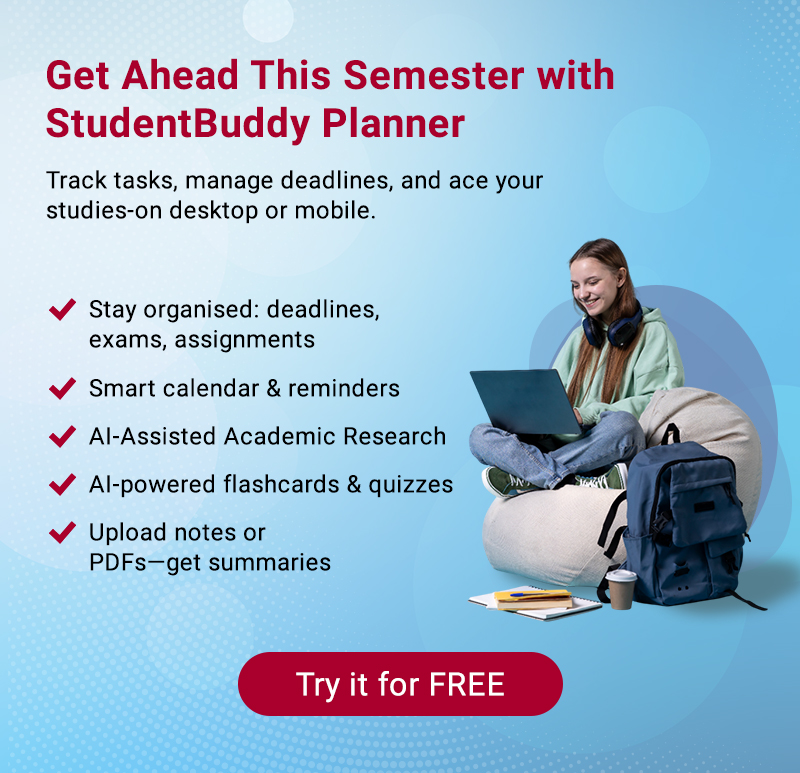Jobs & Careers
University Student CV Example: A Comprehensive Guide and Tips for Crafting the Perfect Resume
Discover how to create an effective CV as a university student with our detailed guide and example. Learn essential tips for showcasing your skills and experiences to stand out in the job market.
5 mins read
Posted: 2024-10-03

Creating a standout CV as a university student can be a daunting task, especially when you may not have extensive work experience. However, your CV is your first opportunity to make a strong impression on potential employers, and with the right structure and content, you can showcase your skills, experiences, and personality effectively. In this article, we will explore the essential components of a university student CV, provide a detailed example, and share tips to help you craft a winning resume.
Understanding the Purpose of a CV
A CV, or curriculum vitae, is a detailed document that outlines your education, skills, experiences, and accomplishments. It serves as a marketing tool to present yourself to potential employers, allowing them to assess your suitability for a job or internship. For university students, a CV is crucial for:
- Applying for internships or part-time jobs: Many students need work experience while studying, and a well-crafted CV can help secure these opportunities.
- Applying for graduate programs: If you plan to pursue further studies, a CV can demonstrate your academic achievements and research experience.
- Networking: A strong CV can serve as a conversation starter during networking events or career fairs, allowing you to connect with industry professionals.
Key Components of a University Student CV
When crafting your CV, it’s important to include the following sections:
1. Contact Information
Your CV should start with your contact information at the top. Include:
- Your full name
- Phone number
- Email address (use a professional-sounding email)
- LinkedIn profile or personal website (if applicable)
- Home address (optional)
2. Personal Statement or Objective
A brief personal statement or objective is an excellent way to introduce yourself and highlight your career goals. This section should be 2-3 sentences long, summarizing your academic background, relevant skills, and what you hope to achieve in your next role. Tailor this statement for each application to reflect the specific position or field you’re targeting.
3. Education
This section should detail your academic background, including:
- Degree(s) pursued (e.g., Bachelor of Arts in Psychology)
- University name and location
- Graduation date (or expected graduation date)
- Relevant coursework, honors, or awards
If you have a strong GPA (generally above 3.0), consider including it as well.
4. Work Experience
Even if you haven’t held many formal positions, you can include relevant experiences such as:
- Part-time jobs
- Internships
- Volunteer work
- Relevant projects or coursework
For each experience, include:
- Job title
- Company name and location
- Dates of employment (month/year)
- Bullet points detailing your responsibilities and accomplishments (use action verbs and quantify achievements where possible)
5. Skills
This section should highlight both hard and soft skills relevant to the position you’re applying for. Consider including:
- Technical skills (e.g., programming languages, software proficiency)
- Communication skills
- Teamwork and collaboration
- Problem-solving abilities
- Time management
6. Extracurricular Activities
Participation in clubs, organizations, or sports can demonstrate your interests and commitment. Include:
- Name of the organization
- Your role or title
- Key achievements or contributions
7. Certifications and Courses
If you have completed any additional training or certifications (e.g., online courses, workshops), list them in this section. This demonstrates your commitment to continuous learning and professional development.
8. References
While it’s common to simply state “References available upon request,” you can also include the names and contact information of professors or previous employers who can vouch for your skills and character, if you have their permission.
Example of a University Student CV
Here’s a sample CV for a university student to illustrate the structure and content we’ve discussed:
Jane Doe
[Your Address]
[City, Postal Code]
[Your Phone Number]
[Your Email Address]
[LinkedIn Profile URL]
Personal Statement
Enthusiastic and motivated university student pursuing a Bachelor of Science in Computer Science with a strong foundation in software development and programming. Seeking an internship position at a forward-thinking technology company to apply technical skills and gain practical experience in a collaborative environment.
Education
Bachelor of Science in Computer Science
University of London, London, UK
Expected Graduation: July 2025
- Relevant Coursework: Data Structures and Algorithms, Web Development, Database Management Systems
- GPA: 3.7/4.0
Work Experience
Intern Software Developer
Tech Innovations Ltd, London, UK
June 2023 - August 2023
- Collaborated with a team of developers to design and implement a mobile application, improving user engagement by 30%.
- Assisted in debugging and troubleshooting existing software issues, enhancing system performance by 20%.
- Participated in daily stand-up meetings, contributing to project planning and updates.
Barista
Coffee Haven, London, UK
Part-Time, September 2022 - Present
- Delivered excellent customer service, managing transactions and resolving customer inquiries.
- Trained new staff on company protocols, fostering a positive team environment.
- Increased sales by 15% during promotional events through effective communication and product knowledge.
Skills
- Technical Skills: Java, Python, HTML, CSS, SQL, Git
- Soft Skills: Strong communication, teamwork, problem-solving, time management
Extracurricular Activities
Member
Computer Science Society, University of London
September 2021 - Present
- Organize workshops and hackathons to promote coding skills among students.
- Collaborate with peers on projects to improve technical skills and knowledge sharing.
Volunteer Tutor
Local Community Centre, London, UK
January 2022 - Present
- Provide tutoring in mathematics and computer science to high school students, improving their academic performance.
Certifications
Certified Python Programmer (Coursera)
Web Development Bootcamp (Udemy)
References
Available upon request.
Tips for Crafting an Effective University Student CV
- Tailor Your CV for Each Application: Customize your CV to match the specific job or internship you’re applying for. Highlight relevant experiences and skills that align with the position’s requirements.
- Use Action Verbs: Start bullet points with action verbs to make your achievements more dynamic. Words like “developed,” “managed,” “led,” and “collaborated” convey a sense of initiative and responsibility.
- Quantify Your Achievements: Whenever possible, use numbers to illustrate your accomplishments. This helps to demonstrate the impact of your work (e.g., “increased sales by 20%” or “managed a team of 5”).
- Keep It Concise: Aim for a CV that is one page long, especially if you are early in your career. Use clear headings and bullet points to improve readability.
- Choose a Professional Format: Use a clean, professional layout with consistent fonts and formatting. Avoid overly decorative elements that can distract from the content.
- Proofread Thoroughly: Spelling and grammar mistakes can create a negative impression. Always proofread your CV multiple times, and consider asking a friend or mentor to review it as well.
- Highlight Soft Skills: Many employers value soft skills such as communication, teamwork, and adaptability. Use examples from your experiences to demonstrate these skills.
- Use Online Resources: Take advantage of online tools and resources for CV templates and tips. Websites like Canva, ResumeGenius, and LinkedIn offer great resources for crafting a professional CV.
- Get Feedback: Before submitting your CV, seek feedback from mentors, professors, or career services at your university. They can provide valuable insights and suggestions for improvement.
- Stay Updated: Keep your CV updated as you gain new experiences, skills, and qualifications. Regularly revising your CV will help you be prepared for unexpected opportunities.
Conclusion
Creating a compelling CV as a university student is essential for standing out in a competitive job market. By following the structure and tips outlined in this guide, you can craft a professional and effective resume that showcases your skills and experiences. Remember that your CV is a reflection of you—put in the time and effort to ensure it accurately represents your capabilities and aspirations. With a strong CV in hand, you’ll be well-equipped to pursue internships and job opportunities that align with your career goals.
Similar Blogs

3 read
Posted: 2024-08-04
Highest paying jobs and degrees in the UK
Discover the highest paying jobs and degrees in the UK. Learn about the most lucrative career paths, essential qualifications, and strategies to achieve your earning potential. Plan your future with this in-depth guide.

4 read
Posted: 2024-08-09
How to find a part-time job
Discover top part-time job opportunities for students in the UK. Find tips on CV writing, job searching, and interview skills to land your ideal part-time role and balance studies with work.

3 read
Posted: 2024-08-14
Indian Students: A Rising Star in the Global Job Markets
Indian students are securing high-paying jobs abroad due to a strong academic foundation, technical skills, and cultural adaptability. They primarily pursue STEM degrees in countries like the US, UK, Canada, and Australia.
